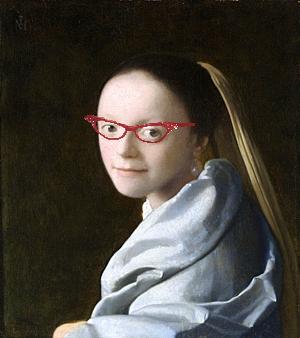Australian schools need to introduce mandatory eye screening to head off a looming myopia crisis, ophthalmologists and researchers say. Half of the world could be short-sighted by 2050 if current trends continue, according to a systematic review and meta-analysis published this week in the journal Ophthalmology. That includes 55.1% of Australians and New Zealanders, […]
Australian schools need to introduce mandatory eye screening to head off a looming myopia crisis, ophthalmologists and researchers say.
Half of the world could be short-sighted by 2050 if current trends continue, according to a systematic review and meta-analysis published this week in the journal Ophthalmology. That includes 55.1% of Australians and New Zealanders, up from 19.7% in 2000.
Environmental factors such as global urbanisation, reduced outdoor time and increased “near work” are blamed, though myopia also has a genetic component and is most common among East Asians. “One big factor seems to be that we are spending more and more time in urban environments,” said study co-author Dr Padmaja Sankaridurg, myopia program leader at the University of NSW’s Brien Holden Vision Institute. “[Prevention] seems to be as simple as spending time outdoors and taking breaks from your close range activities, especially things like screens and devices,” she said.
Without research and planning into prevention and treatment, one billion people could face blindness from high myopia (defined as -5.00 diopter or worse) by 2050, the authors say.
The analysis estimates global trends using data from 145 studies and 2.1 million participants published since 1995. Two hours of outdoor activity per day could significantly reduce myopia risk, according to one study reviewed by the group.
Another found that nearly one in three Australian 17-year-olds were myopic. Dr Sankaridurg called for mandatory eye screening in schools, and said teachers and parents should be taught to look out for warning signs, such as squinting in class. Australian Society of Ophthalmologists’ president Dr Michael Steiner said he doubted Australia’s myopia rate would reach 55 per cent, but he did expect a significant increase in coming years.
“I think GPs should encourage parents to make sure their children spend time out in the sun doing the sporty things that Australian kids have always done,” said Dr Steiner, who practices ophthalmology in Sydney’s west. “Everything’s good in moderation.”
Dr Steiner backed calls for mandatory school screening and criticised the federal government’s 2015 decision to scrap the Healthy Kids Check program, which had funded eye examinations for young people. Dr Elias Kehdi, a paediatric ophthalmologist in inner Sydney, said while parents were increasingly aware of myopia some myths persisted.
“Parents always ask ‘is the iPad damaging my child’s eyes?’ I tell them if you could convince a child to sit with a book for the same amount of time it would have the same impact,” Dr Kehdi said. “Control near work, control indoor activity, make sure they get enough outdoor activity. That’s going to stop myopia.”
GPs could also help combat the perception that eyeglasses sped up the progression of myopia, he added. A spokesperson for the Federal Department of Health said myopia had “not been identified for particular policy attention” as Australia’s framework on eye health focussed on the underlying issues common to eye disease and vision loss, rather than specific conditions.
The National Health and Medical Research Council had provided $4.5 million to myopia research in the past decade, the spokesperson said.


